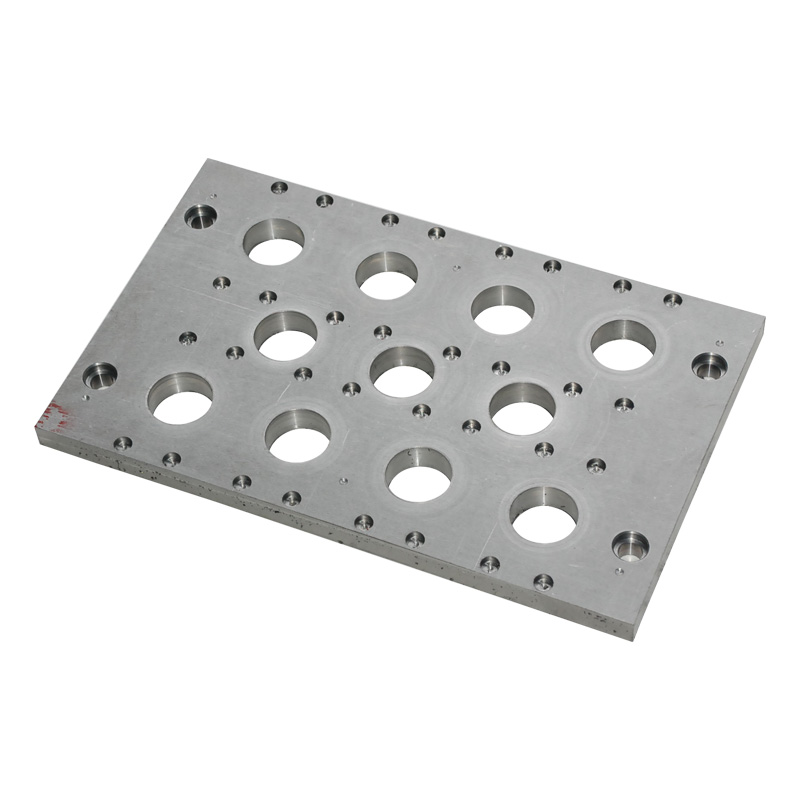Understanding Mold Plates: Everything You Need to Know
2025-01-13
What is a Mold Plate?
A mold plate is a critical component used in the production of molds for various industrial applications, especially in injection molding, die casting, and stamping. Mold plates serve as the base or framework that holds the mold components in place during the molding process. These plates are usually made of high-quality steel or aluminum and are designed to withstand the pressures, temperatures, and mechanical stresses encountered during molding.
What Are Mold Plates Made Of?
Mold plates are typically made from high-strength materials that offer durability, resistance to heat, and minimal wear. The most common materials used for mold plates include:
1. Steel: Steel is the most common material used for mold plates because it provides excellent strength, durability, and resistance to wear. Various types of steel, such as H13 tool steel, P20 steel, and 420 stainless steel, are commonly used in mold plate construction, depending on the specific requirements of the mold.
2. Aluminum: Aluminum mold plates are lighter than steel plates and are used in applications where weight is a significant factor. Aluminum is more affordable and is often used for prototype molds or low-volume production molds.
3. Copper Alloys: Copper-based alloys may also be used for mold plates in certain applications, particularly where heat dissipation is a priority, such as in molds for high-temperature injection molding.
4. Composites: In some cases, composite materials like carbon fiber or fiberglass may be used for specialized mold plates to offer specific benefits such as reduced weight or superior heat resistance.
What Are the Different Types of Mold Plates?
Mold plates come in various shapes, sizes, and designs, depending on the specific molding process and the complexity of the mold. The main types of mold plates include:
1. Standard Mold Plates: These are the basic, flat plates used in the creation of molds. They are often used for simpler designs and can be customized based on mold requirements.
2. Pre-Hardened Mold Plates: These plates come with an initial hardness treatment and are designed to withstand moderate heat and pressure during the molding process. They are often used in applications where the mold will undergo less rigorous stress.
3. Hardened Mold Plates: Hardened mold plates are heat-treated to achieve a high level of hardness and durability. These plates are ideal for use in molds that will face high levels of mechanical stress, high temperatures, or abrasive materials during production.
4. Cavity Plates: These plates are designed to create cavities in the mold where the material will be injected. They help shape the final product and are often paired with other plates that create the core and the outer parts of the mold.
5. Insert Mold Plates: Insert plates are used to hold inserts within the mold. These inserts can be metal or other materials that are placed into the mold to form specific parts or features of the final product.
What Are the Applications of Mold Plates?
Mold plates are used in a wide range of industries and applications, especially in manufacturing processes that involve molding. Some of the most common applications include:
1. Injection Molding: Mold plates are a key component in the injection molding process, where they hold the mold cavity and core in place while molten material is injected into the mold to form plastic parts.
2. Die Casting: Mold plates are used in die casting to create metal parts. They form the mold in which molten metal is poured, cooling and solidifying to form parts like automotive components, hardware, and electronics.
3. Compression Molding: Mold plates are used in compression molding, where they help form parts made from thermosetting plastics or rubber by applying pressure and heat to the material in the mold.
4. Stamping: Mold plates are often used in stamping processes to hold the metal sheets in place while they are stamped into specific shapes and sizes.
5. Prototype Development: Mold plates are also used in the prototype development phase, where smaller batches of products are created for testing and validation before moving into full-scale production.
How Are Mold Plates Manufactured?
The manufacturing process for mold plates involves several precise and specialized steps to ensure that the plates meet the required specifications and are ready for use in molding applications. The main steps include:
1. Material Selection: The first step is selecting the appropriate material for the mold plate, based on the requirements of the molding process, such as heat resistance, strength, and cost considerations.
2. Machining: Mold plates are machined to precise dimensions using CNC (Computer Numerical Control) machines. This process involves cutting, drilling, and milling the plates to achieve the correct shape and size.
3. Heat Treatment: Depending on the material used and the desired properties, mold plates may undergo heat treatment processes like hardening or annealing to improve their strength, toughness, and resistance to wear.
4. Polishing and Surface Treatment: To improve the mold plate's performance, it may undergo polishing or surface treatment processes like coating or plating to enhance properties such as smoothness, corrosion resistance, or thermal conductivity.
5. Quality Control: Throughout the manufacturing process, mold plates undergo rigorous quality control checks to ensure they meet precise specifications. These checks include measurements of dimensions, hardness testing, and inspections for surface defects.
What Are the Benefits of Using Mold Plates?
Mold plates offer several benefits that make them essential for high-quality mold production:
1. Durability: Mold plates are built to last, with materials designed to withstand extreme temperatures, pressure, and wear. This durability extends the life of the molds and minimizes downtime during production.
2. Precision: Mold plates are manufactured with precision to ensure that the mold components fit together perfectly, which is essential for creating high-quality, defect-free products.
3. Versatility: Mold plates are used in a wide range of molding processes, making them versatile for various industries, including automotive, medical, electronics, and consumer goods.
4. Cost-Effective: While mold plates may have a higher initial cost, their long-lasting durability and precision help reduce production costs over time by minimizing the need for mold repairs or replacements.
5. Improved Productivity: By ensuring that molds perform efficiently and reliably, mold plates help to improve overall production efficiency and reduce the chances of defects or errors in the final product.
How Do You Maintain Mold Plates?
Proper maintenance of mold plates is essential to ensure their longevity and optimal performance. Here are some maintenance tips:
1. Regular Cleaning: Mold plates should be cleaned regularly to remove debris, dust, and residues that can affect the quality of the mold and the final product.
2. Inspection: Routine inspections should be conducted to identify any signs of wear, damage, or deformation. This helps in early detection of potential issues that could lead to mold failure.
3. Lubrication: Lubricating the mold plates, particularly moving parts, helps reduce friction and wear, ensuring smoother operation.
4. Storage: Mold plates should be stored in a dry, clean environment to prevent rust or corrosion. Protective coatings may also be applied to help protect the surface from damage.
Conclusion
Mold plates are a vital component in the mold-making process, ensuring that molds are sturdy, precise, and durable for efficient production. Whether used in injection molding, die casting, or stamping, mold plates are essential for producing high-quality products across industries. By understanding the different types, materials, applications, and benefits of mold plates, manufacturers can make informed decisions to optimize their mold-making processes and improve overall production efficiency. Proper maintenance and care further enhance the performance and lifespan of these crucial components.



